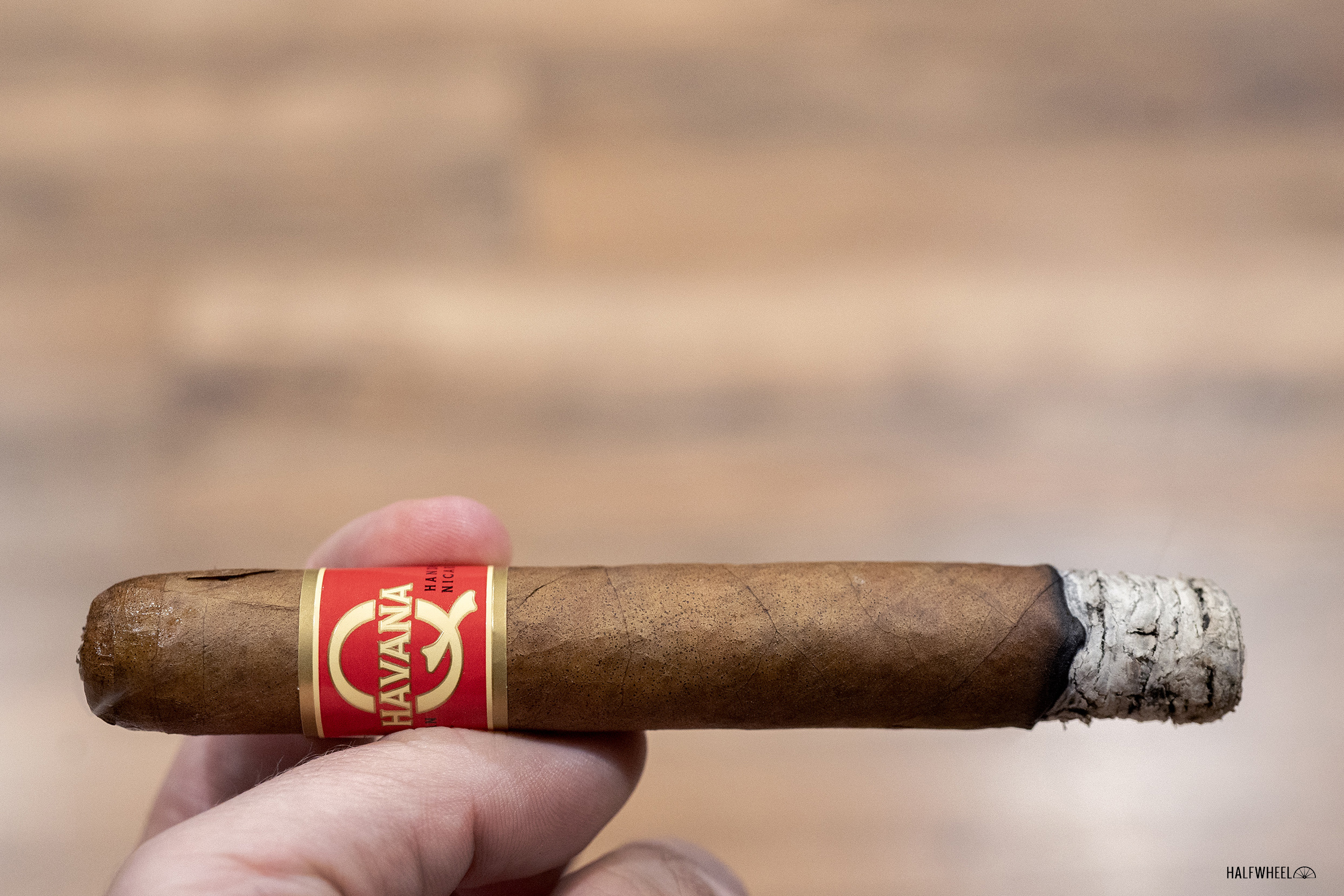In October 2020, J.C. Newman added a new cigar line called Havana Q, which it called “a cousin” of its Quorum brand, a popular, value-oriented cigar that is sold in bundles. While related, there are some noticeable differences between the two lines.
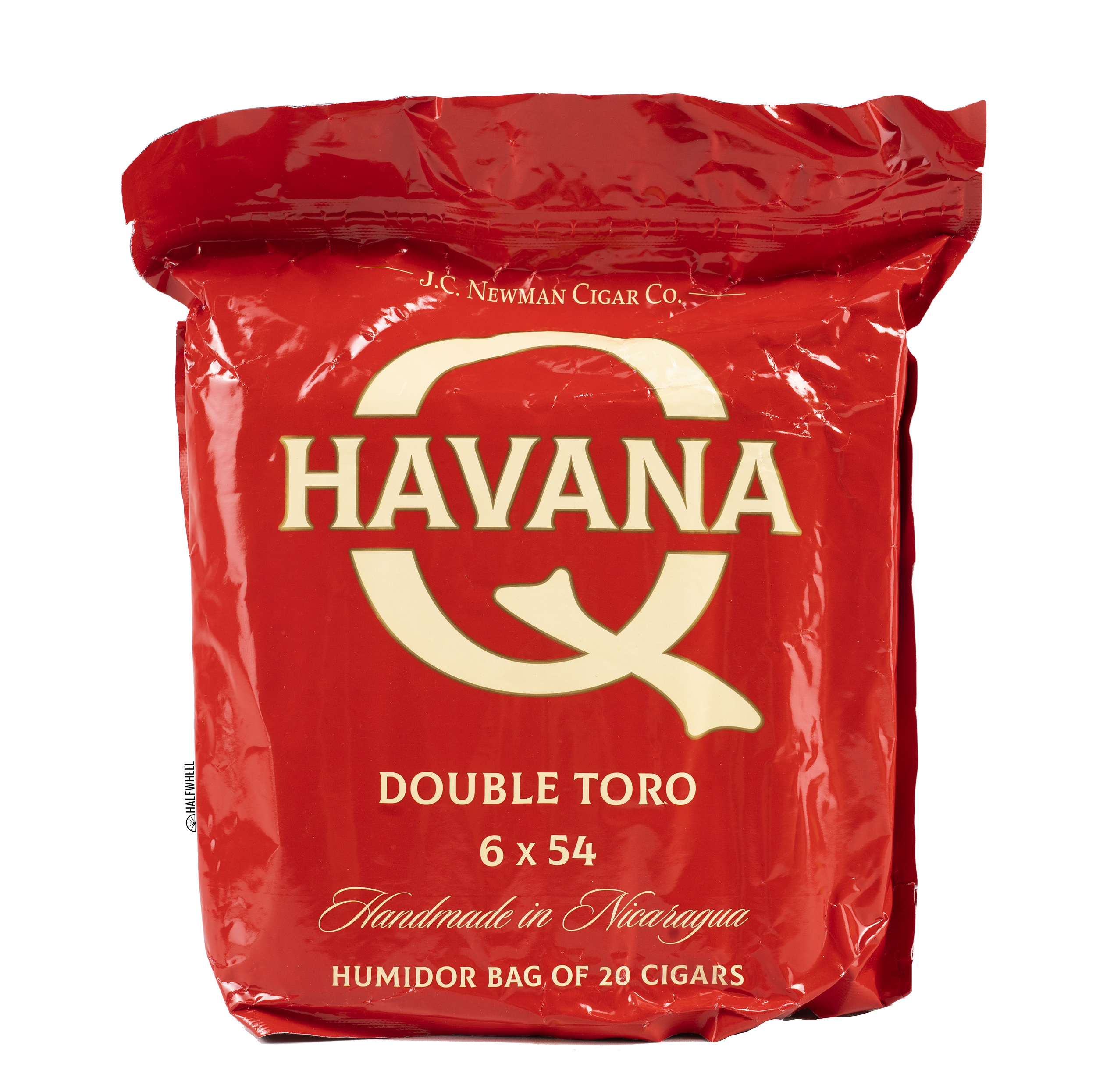
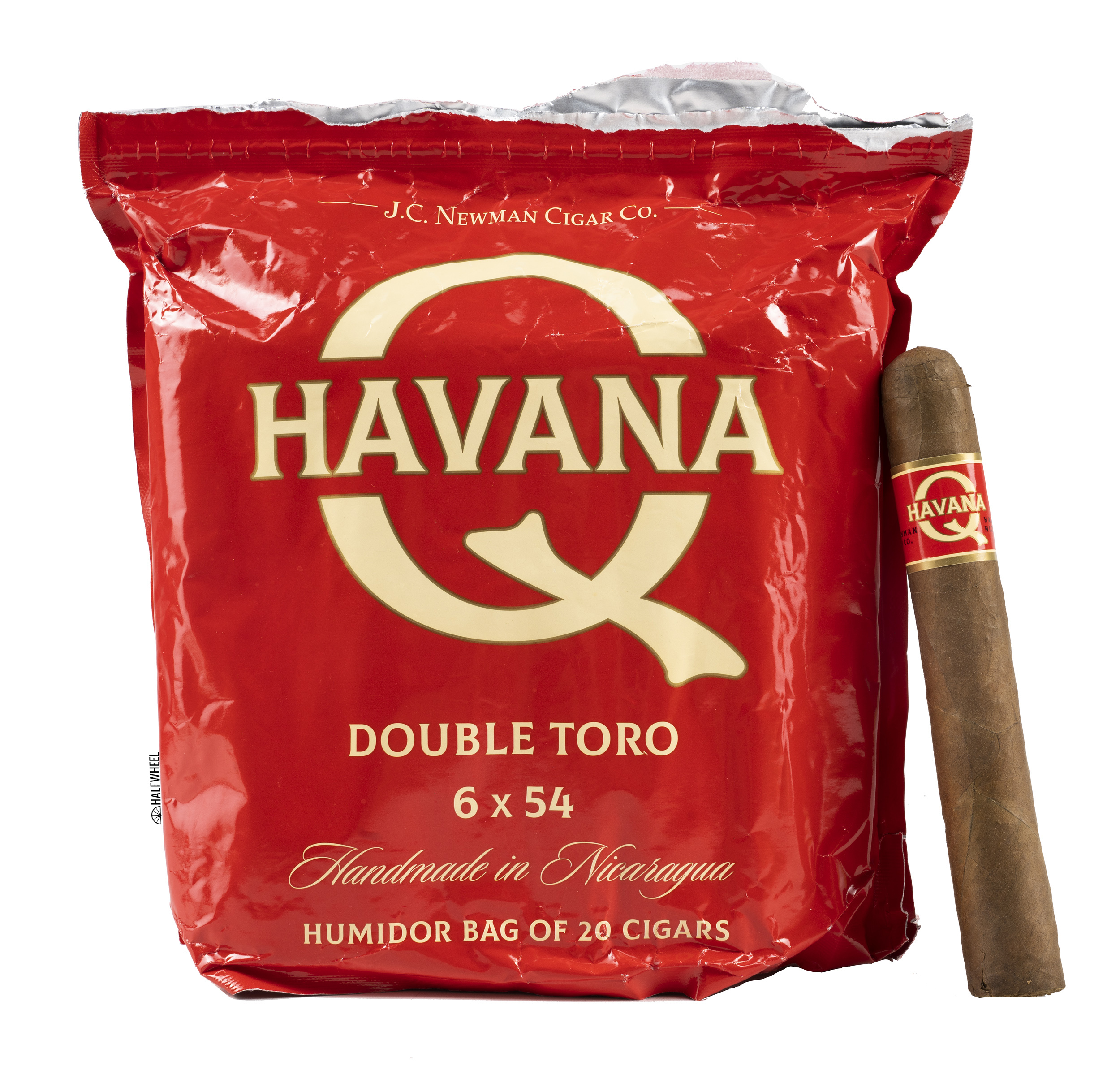
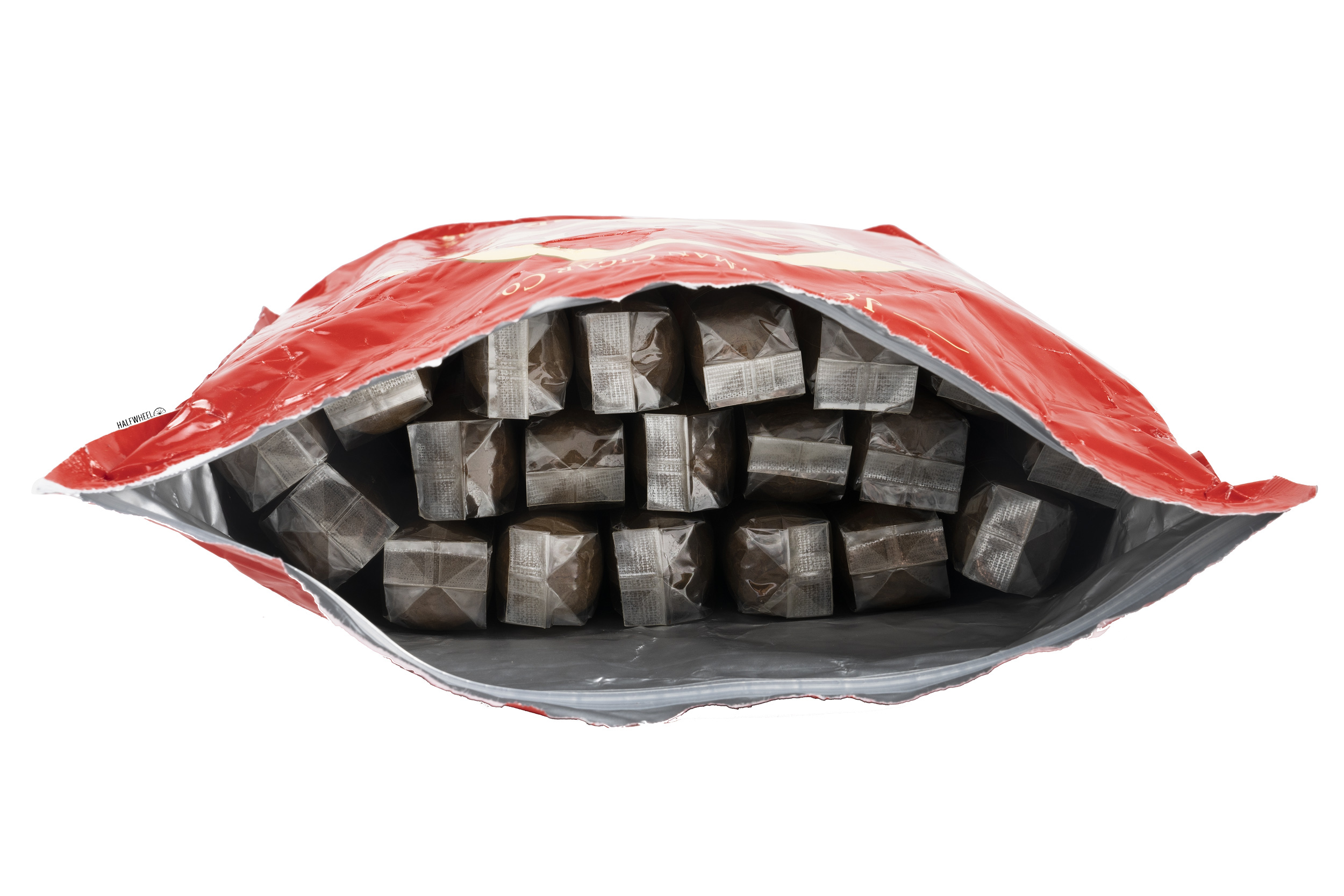
The most obvious is how the Havana Q is packaged, being offered in resealable, humidified bags as opposed to bundles. Second, the Havana Q line is offered in thicker vitolas, which the company said cater to the preferences of the modern cigar smoker.
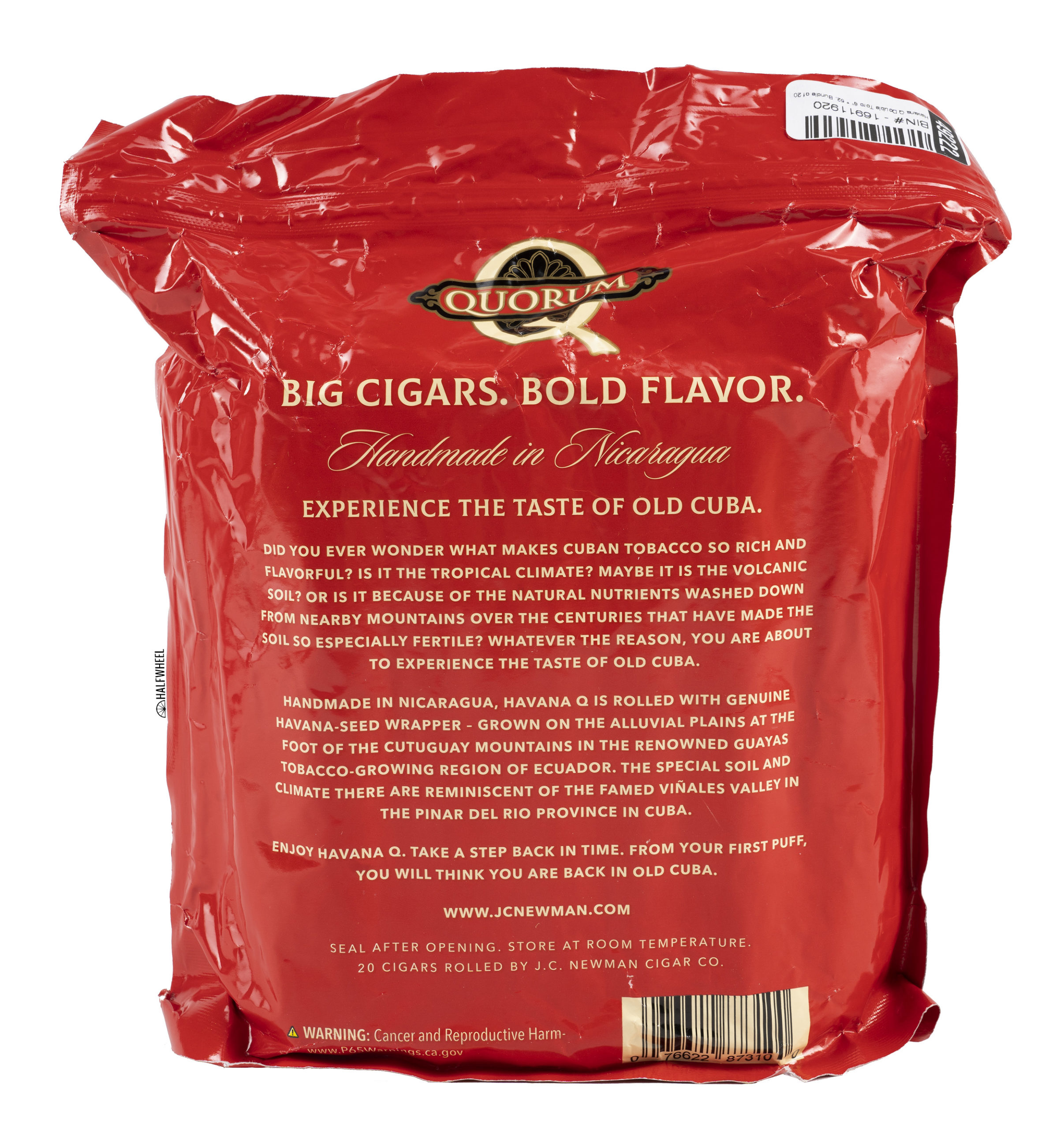
The blend uses an Ecuadorian-grown, Havana-seed wrapper, while the binder and filler both come from Nicaragua. The company says that the blend allows the smoker to “experience the taste of Cuba,” which it attributes to the wrapper being grown
The Havana Q line is offered in four sizes, all with the name Double, since they are larger ring gauges than what is offered in the original Quorum brand:
- Havana Q Double Robusto (5 x 56) — $2.70 (Bundle of 20, $54)
- Havana Q Double Toro (6 x 54) — $2.85 (Bundle of 20, $57)
- Havana Q Double Churchill (7 x 52) — $3.05 (Bundle of 20, $61)
- Havana Q Double Grande (6 x 60) — $3.30 (Bundle of 20, $66)
Production is handled by the J.C. Newman PENSA factory in Estelí, Nicaragua.
Here’s what I said about the Havana Q Double Toro when I reviewed it in January 2021:
I don’t know what the expectations should be for a $3 cigar, but for the bulk of its two hour smoking time, the Havana Q Double Toro exceeded what I assume the typical premium cigar smoker would think. The flavors aren’t the most complex or elegant, but they are balanced and enjoyable, and retrohales are clean and peppery enough to provide some gloss over the rougher spots. It’s not until the final third that the cigar tips its hand, getting a bit too dry and earthy for my liking, and that’s coming from someone with a palate that generally enjoys an earth-forward profile. The fragility of the wrapper isn’t great, though it remained a minor annoyance instead of turning into a mess. If you like having some value-priced cigars in your humidor, the Havana Q Double Toro is certainly worth checking out as there are enough puffs where it easily outperforms its price tag.
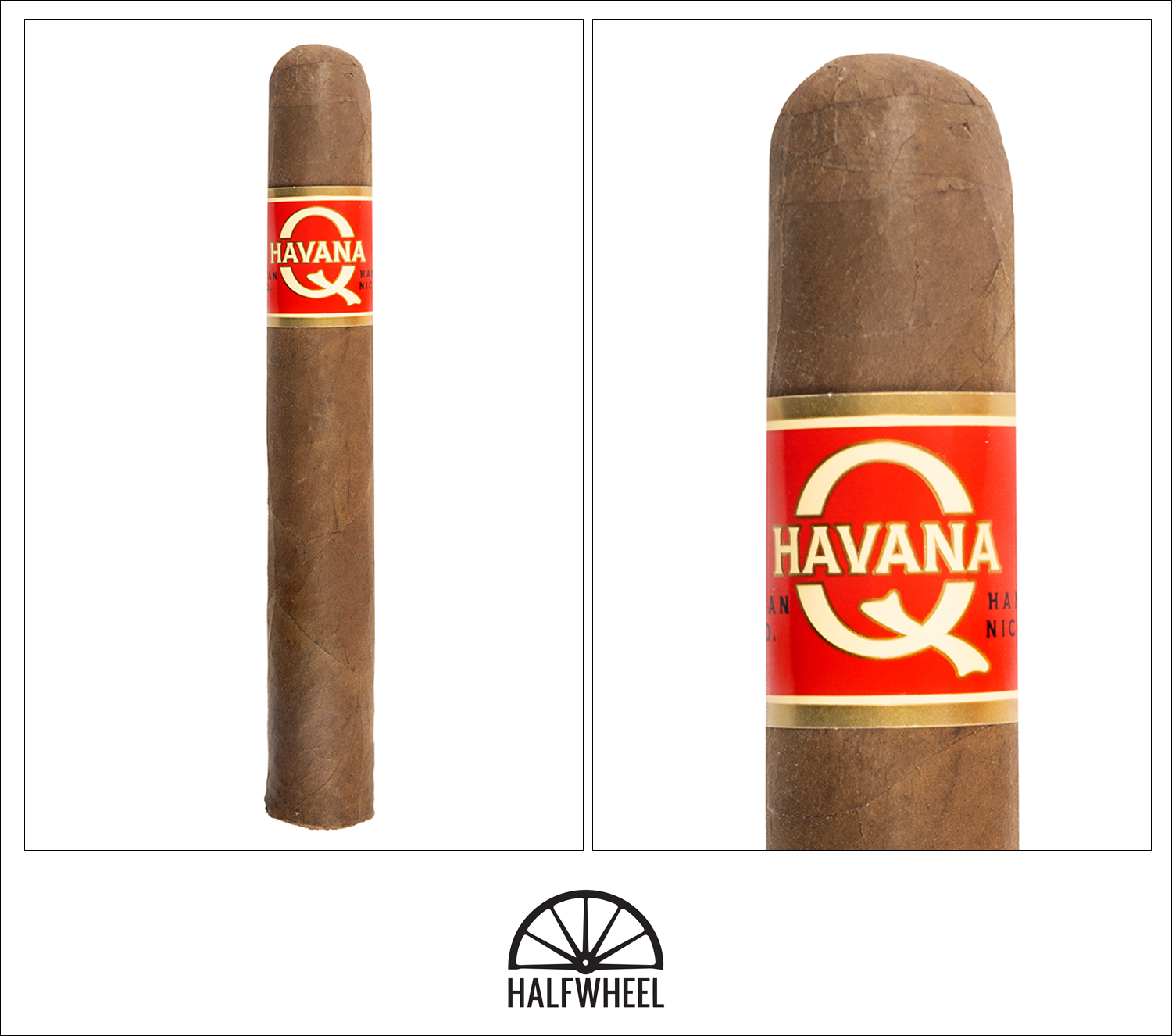
- Cigar Reviewed: Havana Q Double Toro
- Country of Origin: Nicaragua
- Factory: J.C. Newman PENSA
- Wrapper: Ecuador
- Binder: Nicaragua
- Filler: Nicaragua
- Length: 6 Inches
- Ring Gauge: 54
- Vitola: Toro Extra
- MSRP: $2.85 (Bag of 20, $57)
- Release Date: October 2020
- Number of Cigars Released: Regular Production
- Number of Cigars Smoked For Redux: 1
I wish I remembered what the cellophane on the Havana Q Double Toro looked like when the cigar was new, as I wish I could compare it to how it looks now. It’s not yellow in its current state, but it appears headed down the path. It’s at a color that sort of blends with the color of the Havana Q word mark on the band and the color of the SKU sticker, as well as the gold trim of both the band and sticker. The cigar itself is a nicely tanned shade that is reminiscent of a few things I don’t eat much of, namely caramel and graham crackers. The cigar is rolled very well, firm in density with a bit of give, along with clean seams and a well applied cap. The foot has aromas that remind me of graham crackers as well, or more specifically an empty box of graham crackers as it is thinner and has some of that card stock used for food boxes. There’s a bit of pepper in there as well, standing out more in one nostril than the other, and while it’s a bit sharp, it isn’t overpowering or unpleasant. The cold draw has a soft wheat bread flavor, with only glances at sweetness or pepper, an enjoyable if not quite dynamic flavor. The more cold draws I take, the more tingle I get on my lips and the front part of my tongue.
I’m quite impressed by how the Havana Q Double Toro starts, giving my taste buds a toasty flavor that is both approachable and engaging, with a bit of a buttery spread and a light sprinkle of white pepper. The flavor is pretty straightforward and enjoyable, as well as very familiar, which makes it that much easier to smoke. The first inch is fairly consistent with that opening flavor, and the ash builds up impressively well throughout this section. The flavor picks up a bit more of a toast sensation before adding just a touch of very light smoke, almost as if a neighbor lit a campfire or had just thrown something on the grill and that aroma was wafting over the fence. I am beginning to notice that the wrapper is a bit on the fragile side, particularly around the head of the cigar, though nothing is causing much concern. Retrohales show another change in the cigar, as it takes on a bolder black pepper note, still a bit thin in body but definitely more impactful than what had been offered earlier. Outside of a burn line that gets a bit askew, construction is very good with a near perfect draw and plenty of smoke production. The first half is generally medium-minus, body is medium-minus, and strength is mild.
Once the burn line passes the midway point, the body of the smoke picks up a bit of creaminess, which gives the smoke that nudge up the body scale that I would have liked to have had in the first half. The profile is a bit less smoky than it had been earlier, thought it has held onto the toast while starting to pick up some unsalted, unroasted mixed nuts. That shift gives the flavor a touch more character and begins to suggest a bit of light earthiness, and by the end of the second third, the Havana Q Double Toro is delivering a profile well above what I think anyone would expect from a $3 cigar. The final third picks up a bit of kettle chips, including a touch of oiliness and salt, and while there’s a touch of irritation from time to time, it is fairly mild and nothing that can’t be soothed with a sip of water. The final inch brings about a bit more pepper for the retrohale and aroma, the latter of which introduces a sharper expression of the smoke to the nostrils with a bit of surprise. While the body of the smoke softens, the finish of the flavor lingers longer, particularly a bit of gritty black pepper that is almost squarely hitting the top, curved part of the throat. The fragility of the wrapper shows itself with a split from the burn line up to the base of the head, almost as if shedding a coat on a suddenly hot day, and in some ways I expect to see if come off completely when I pick up the cigar. Thankfully it doesn’t, but the resulting visual is not good. The cigar stays just a bit rough with black pepper as it comes to its close, after about two-and-a-half hours, finishing medium-plus in flavor, medium-plus in body, and medium-minus in strength. If the wrapper had held together, I’d be inclined to say construction was just about ideal, as the draw, combustion and smoke production were all very good.
I didn’t come into this redux with much in the way of expectations for what 18 months would do to the Havana Q Double Toro, but the results are very impressive. On the whole, the flavors are clean, approachable and enjoyable, and as noted above, capable of delivering a pleasant experience. The rougher spots found in my original experience with the Havana Q Double Toro have largely been smoothed over, particularly in the final third, which performs much better than it did initially. The construction of the cigar is very good, though the fragility of the wrapper continues to be problematic. While I’m not quite ready to suggest buying a bag of these and putting them away for aging, if you like what the Havana Q has to offer, I’m happy to report that time seems to only make it better.


